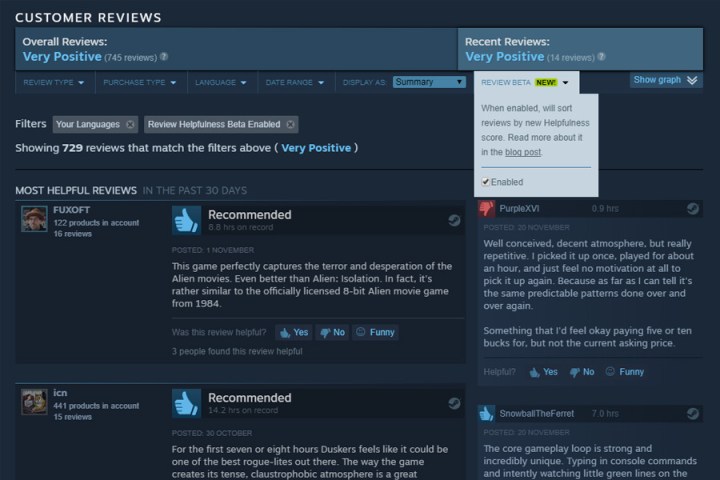
As much as reviews on Steam have helped many millions of gamers make more informed purchasing decisions, one of the issues that has surfaced because of the system’s implementation, is review bombing. The practice involves negatively reviewing games — and downvoting positive reviews — for reasons outside of the game. Valve is constantly tweaking different aspects of Steam, but continues to battle the problems with reviews and these latest attempts are designed to crack down on the worst offenders.
In its breakdown of the changes, Valve discusses how it looks to identify what is considered a “helpful” review. The opinions of other reviewers and Steam users are paramount in identifying them, but as with negative reviews, that rating system can be abused. By looking to reduce the impact of those who rate a number of reviews negatively in a short period of time, Valve hopes to keep legitimately useful reviews where they can be seen.
“We found a small set of users on the far extreme that are clearly trying to accomplish something quite different from normal players, and are rating more than 10,000 reviews as helpful or unhelpful on a single game,” Valve said in its blog post. “This behavior is not only humanly impossible, but definitely not a thoughtful indication of how ‘helpful’ each of those reviews were.”
Valve hopes that by prioritizing quality of reviews and ratings over quantity, these outliers will have far less influence over how a game is perceived. It does highlight though, that even those who rate a lot of reviews will still have an impact, as long as they are within its data-driven norms.
On top of that, Valve is also introducing what it considers a fairer ratio of reviews on store pages. With this update, games with 80 percent positive reviews and 20 percent negative (for example), would have that same ratio of reviews displayed on the store page. By showing reviews based on the overall makeup of positives and negatives, Valve hopes that store pages will display a more accurate idea of how a game has been received by its audience.
Both of these additions are now operating in beta on Steam and anyone who prefers the older system can opt-out of it, Eurogamer reports. Valve is also considering more changes in the future, all with the idea of giving gamers a better idea of how a game plays at the time of purchase.
Bought too many Steam games recently? Here’s how to uninstall some to make room.



